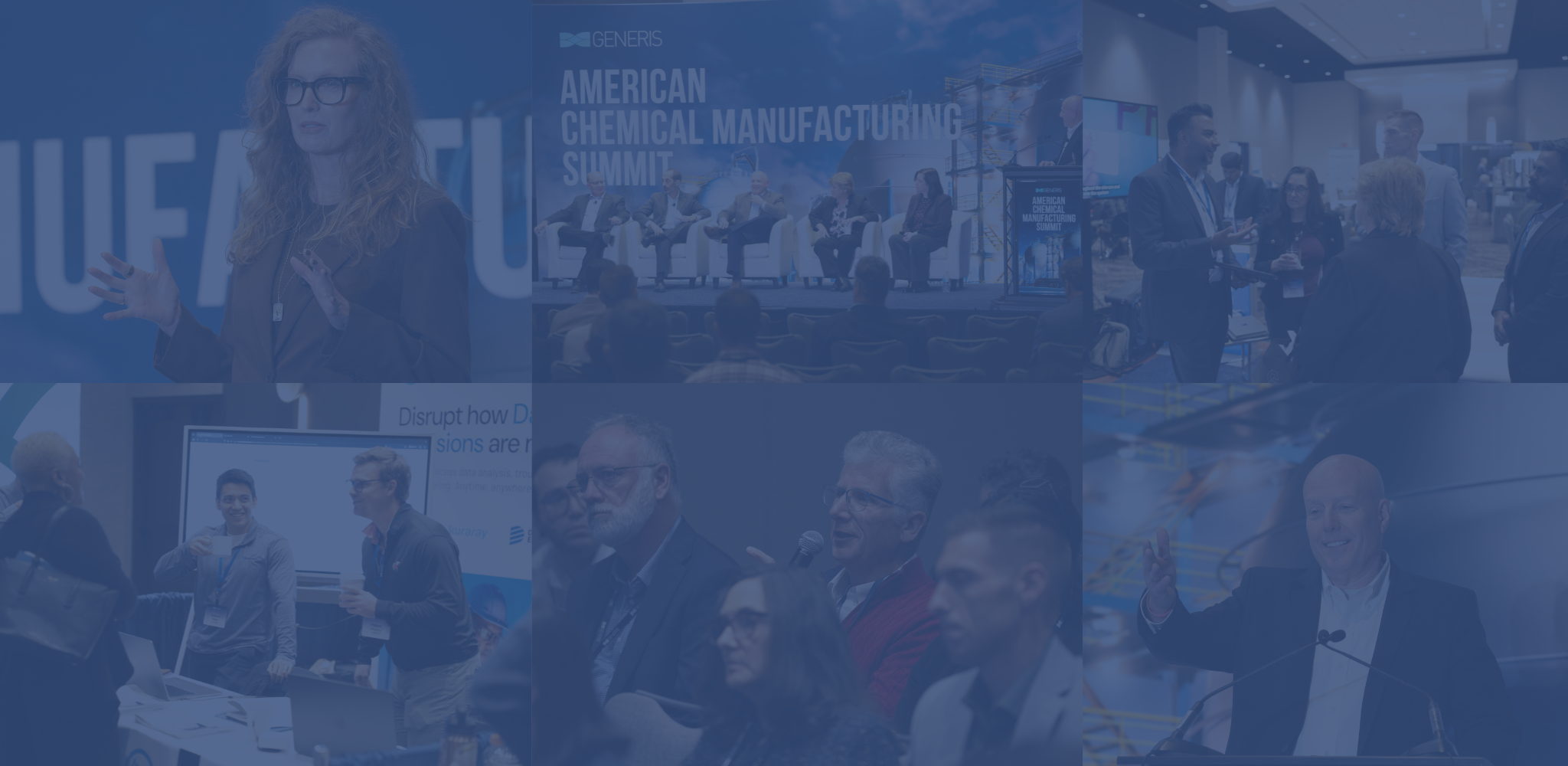As we gear up for the European Medical Device Summit, we're thrilled to spotlight Dr. Jules Keghie, Vice President and Head of System Engineering and Architecture at Elekta.
With over 15 years of experience in product development, certification, and change management, Dr. Keghie's expertise has been pivotal in shaping the future of medical devices. His journey, from significant roles at Philips to impactful contributions at Elekta, underpins a career marked by innovation and leadership. Dr. Keghie's academic prowess, with an MBA and a PhD in Electrical Engineering and Electronics, further complements his practical achievements, making him an invaluable asset to our Product Development panel.
Introduction
We had the privilege of connecting with Dr. Keghie prior to the summit, delving deep into several pivotal topics that are reshaping the medical device industry. .jpg?width=302&height=227&name=20240220_123736%20(2).jpg) Our discussion encompassed the transformative impact of emerging technologies, the essential role of collaboration and partnerships, navigating through the complexities of new regulatory landscapes, leveraging data analytics for enhanced patient outcomes, addressing cybersecurity challenges, and the critical importance of sustainability and patient engagement in product development.
Our discussion encompassed the transformative impact of emerging technologies, the essential role of collaboration and partnerships, navigating through the complexities of new regulatory landscapes, leveraging data analytics for enhanced patient outcomes, addressing cybersecurity challenges, and the critical importance of sustainability and patient engagement in product development.
Dr. Keghie shared his invaluable insights on these subjects, offering a glimpse into the future trends and strategies that organizations should adopt to stay ahead in this rapidly evolving field.
Let's explore Dr. Keghie's perspectives on these critical issues:
Emerging technologies are advancing rapidly. How do you foresee these technologies shaping the future of medical device design and production, and what specific innovations do you anticipate?
Among many maturing technologies, I see significant potential within the foreseeable horizon in the combination of GenAI to create efficiencies within the exploration phase of new offerings. First principles or physics-based driven modeling and simulations will complement—with a growing proportion and greater efficiency or productivity—the design control aspects in the product creation and maintenance lifecycle of medical devices. Physics-based modeling and GenAI can mitigate challenges in hiring qualified personnel and strategic knowledge management.
Collaboration and partnerships often drive innovation. Can you identify which collaborations and partnerships will be essential for advancing the medical device industry in the coming years, and what areas of expertise will they bring to the table?
Collaboration is definitely key in this medical devices industry, where identifying and appropriately formulating the most important problems to tackle has become as important as looking for specific solutions afterward. An outcome and values-driven approach suggests increasing our focus on collaborations with end customers as well as keeping total lifecycle value optimization in mind.
Such an approach usually drives the right options and choices both within Health Tech organizations and in relation to technology and capabilities partnerships with research partners, development partners, or suppliers. An outcome and values-driven approach is a key enabler of sustainable value creation in the medical device industry for the years to come. This requires, besides an understanding of the sector and technologies, a mindset of sustainable value creation.
The new MDR and IVDR regulations have introduced significant changes to the medical device industry. How do you anticipate these regulations influencing and shaping future innovations in the industry?
Besides the new classification rules, my understanding is that it brings more transparency, for instance, with the opportunities the UDI offers and some clarity around SW classification as a medical device or not. This is important as software plays an important and even growing role in the value, diagnostic, treatment, and monitoring chains along the patient journey. The medical device industry would benefit from a harmonization of key aspects of the regulatory framework across the major markets.
Data analytics and real-world evidence are becoming increasingly important in healthcare. How can medical device companies effectively leverage these tools to drive product development and improve patient outcomes?
Data analytics and statistically driven value creation with GenAI are here to stay. More specifically for the medical devices industry, I foresee companies being more able to leverage these capabilities to obtain a competitive advantage as incremental product development and certification cycles will be optimized, using, for instance, smart standards.
It is also encouraging to see that key actors in the regulatory framework, such as the FDA, are issuing more guidance based on ASME V&C40-2018 in support of a more efficient and data-driven documentation of design control.
Looking forward, what trends do you predict will be the biggest disruptors in the medical device industry over the next 10 years, and how should organizations prepare to adapt to these disruptions?
The combined impacts of GenAI and physics-based modelling and simulations in many stages of the product creation and maintenance process have disruptive potential within the medical device industry as these technologies are maturing quickly. There will likely be significant impacts on aspects such as intellectual property, data governance, product compliance, and documentation for global market access, among others.
Sustainability is a growing concern across industries. How can the medical device industry contribute to environmental sustainability in the design, production, and disposal of medical devices, and what initiatives are on the horizon?
One way the medical device industry can contribute to environmental sustainability is by integrating sustainability into its strategic roadmap and committing to sustainability targets as an integral part of business objectives. Sustainability should be embedded as an integral part of the quality management system of medical device companies, reflecting the needs associated with sustainability well in the formulation of product requirements.
It’s a marathon, not a sprint, and there is a growing consensus that environmental sustainability can lead to economic and societal sustainability.
It’s a marathon, not a sprint, and there is a growing consensus that environmental sustainability can lead to economic and societal sustainability.
.jpg?width=400&height=240&name=20240220_123814%20(1).jpg)
Cybersecurity is a critical aspect of medical device safety. How do you see the industry addressing the challenges of cybersecurity in medical devices as technology continues to advance?
Cybersecurity has become an integral and very important non-functional aspect of what makes a product safe and effective. Best practices include integrating cybersecurity needs from all relevant stakeholders from the beginning into the holistic requirements framework guiding medical device product definition and development.
This integrative and risk-based approach ensures cybersecurity is not an afterthought but one of the most important DfX aspects to consider for safe, effective, and secure products in the market.
Patient engagement is becoming more significant in healthcare decision-making. How can medical device companies involve patients in the design and development process to ensure that devices meet their needs and preferences?
This can be achieved by using technology to gather real-time feedback from patients willing to share it. Examples like Kaiku in the oncology sector demonstrate this can be done successfully, optimizing treatment delivery for the benefit of patients.
We need more tools that leverage data analytics and AI to improve understanding of the patient journey, clinical and customer needs, leading to improved quality and reliability of developed products.
Regulatory pathways for innovative devices can be complex. What strategies do you recommend for organizations seeking regulatory approval for cutting-edge medical devices, especially in the context of evolving regulations and standards?
My recommendation is for companies to accelerate digital transformation by fully digitalizing their design control chain. This is critical in a world where the need and pace of changes, including in regulations and standards, are increasing, and traceability as well as explainability of compliance is required.
A structured approach is necessary to manage complexity, ensuring artifacts generated are scalable and minimizing manual interventions through digitalization and appropriate process governance. This usually improves organizational efficiency and collaboration with stakeholders such as regulators and notified bodies.
To dive deeper into the insights and expertise of Dr. Jules Keghie, join us at the European Medical Device Summit. This is a unique opportunity to engage with thought leaders like Dr. Keghie and explore the cutting-edge trends and innovations shaping the medical device industry.
Don't miss out on the chance to contribute to pivotal conversations and connect with peers and experts driving progress in the field. Secure your spot at the summit and be part of the future of medical devices.
%20(1).png?width=773&height=112&name=Generis%20Logo%20full%20Colour%20(Large)%20(1).png)



